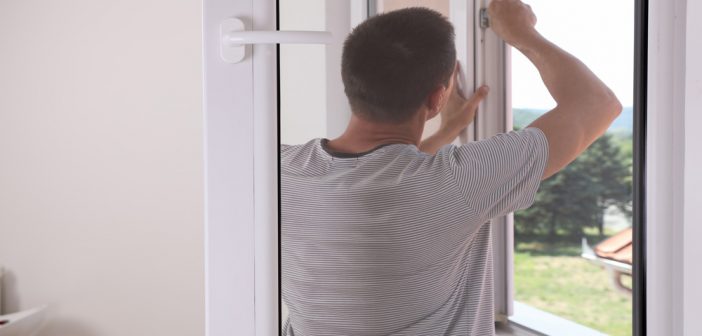No one likes the feeling of a cold breeze coming in through a closed window. No matter if your home is a new build or has seen a few decades in the sun, drafty windows can be a serious and annoying problem to deal with. A draft might mean poor insulation in your house which can drive up your heating and cooling bills. To help you take control of this issue, below is a list of cost effective solutions to seal up your drafty windows and take control of your home’s temperature.
How to Figure out Where the Leak Is
• Grab a piece of tissue paper and hold it up to the edges of your window frames on a windy day. If the tissue begins to flutter, then you have found your drafty culprit.
• Use a lit match or candle and hold the flame (carefully) near your window frames. Wherever the flame begins to flicker, place a marker near the area so that you know where you need to start sealing.
How to Seal the Leak
Weatherstripping
Weatherstripping is a relatively inexpensive piece of equipment that you can buy from any hardware store. It is usually made of a type of thick foam with one adhesive edge that can be affixed to the side of a window or around the frame of a door. This is a popular DIY weather proofing technique that is generally highly effective.
Caulking
When your leak issue is coming from the exterior of your home, you can turn to caulk to seal up areas around the window and stop that pesky draft from getting inside. It is likely that your home has seen a layer of caulk applied to it at one point or another. However, over time, caulk will begin to deteriorate and must be re-applied.
Best Caulk for Exterior
• Siliconized Acrylic Caulk – Water resistant, non-flammable, and temperature resistant
• Butyl Rubber Sealant – Solvent-based and highly waterproof
• Synthetic Rubber Caulk – Flexible, resistant to breaking, and can be applied during poor weather (such as rain or extreme cold)
• Modified Silicone Polymers – Excellent flexibility, can be applied in poor weather, temperature resistant, and waterproof
If the leak issue is coming from inside the house, then you can turn to a wide variety of water based caulks that are perfect for interior sealing. Caulks come in either a long tube that must be applied using a caulk gun or you may find them in the form of a premade “rope” that can be easily applied around the edges of a window.
Insulated Curtains
These thick pieces of fabric are sometimes the best option to help reduce the amount of draft that can escape into your home during the winter or block the sun’s rays during the summer. This is a highly cost effective solution that can be easily found at homestores. However, one drawback is order for thermal curtains to be effective, they must be kept closed over a window; meaning that if you enjoy letting natural light into your home, you may find this solution less than favorable.
Interior Storm Windows
These window sized panels are generally made of a large pane of glass or acrylic that can be installed in the interior side of your existing windows. In essence, you are placing a secondary, much thinner window pane against your windows to give your home a secondary anti-cold and wind barrier. Interior storm windows are much less expensive than exterior storm windows; however, these are a solution made primarily for the winter months rather than a summer insulation solution.
Shrink Film
Shrink Film is a method of sealing involves using a clear plastic film that is generally sold and applied with double sided tape. Simple affix the film around the edges of the interior window frame with the tape and then, with a hair dryer, go around the film and “shrink” it with heat until it is firmly affixed and wrinkle free. This is a highly cost effective and easy DIY solution, though some may not like the “shrink wrapped” appearance of the windows after application.
Draft Snakes
This is a truly DIY anti-draft method that involves creating long tubes made of fabric that can be filled with dry rice or a similar material. Once created, the tubes can be placed along the window sill (or beneath a door) to help block the incoming draft. While this method is very cheap and easy to do, if your window leak is not coming from around the sill but is higher up, then this method will not be highly effective at solving your draft problem.
Cellular Shades
Unlike the thermal curtains, cellular or honeycomb shades are an insulation option that does not completely block natural light. These shades are made from pleated materials with “honeycomb” cells that act as a barrier between the window and the rest of the room. Depending on your specific needs and how you want your room to look, you can choose to have cellular shades in lighter or darker fabrics and can install them to either work like normal blinds that open and close from the bottom only or you can design them so that you can open and close the shades from both the top and the bottom for more personal customization options in your home.
No matter what method you choose, know that there are plenty of cost effective options that you can use to fix a drafty window and lessen the amount of heat or cooling that can escape from within your home. Improving your home’s insulation is a big step in lowering your overall heating and cooling costs and improving the overall worth of your home.








